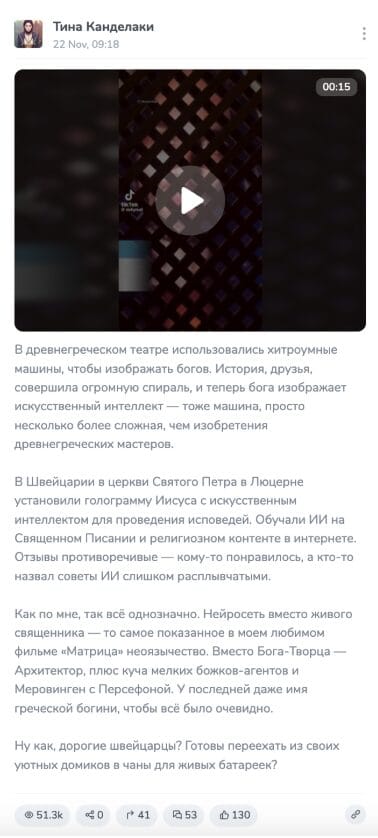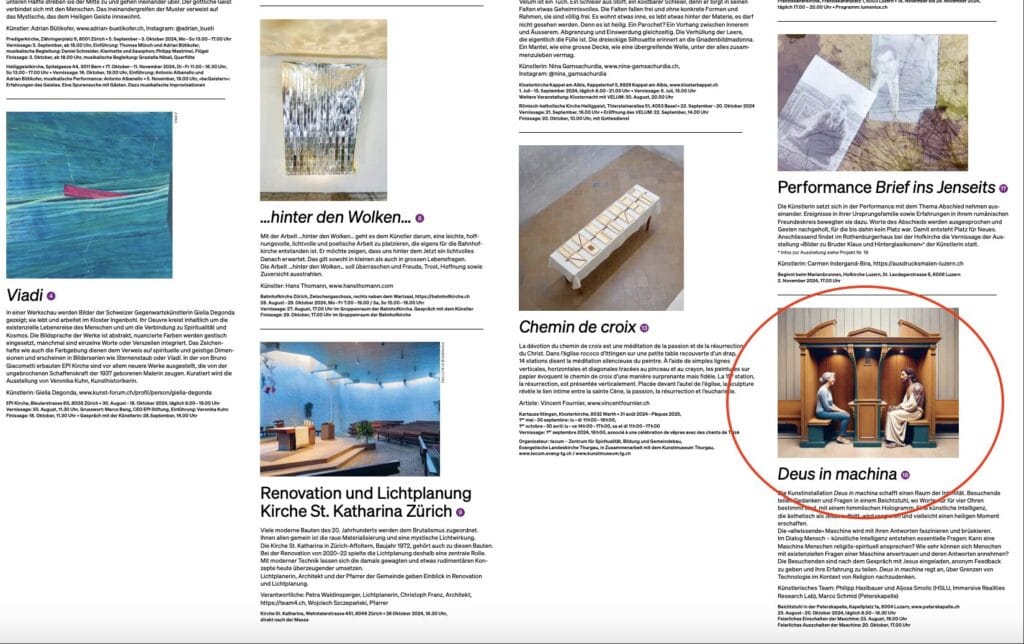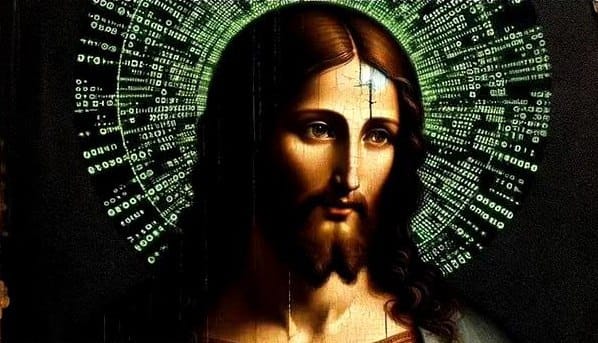In November 2024, news spread across the Internet: parishioners of a Swiss church will no longer confess to a priest, but to a hologram of Jesus Christ trained on the basis of artificial intelligence (AI). We have verified the authenticity of such publications.
On November 20, reports began to appear in the media and Telegram channels about innovation in the Church of St. Peter in Lucerne, Switzerland. It is alleged that the parishioners of this temple are now accepting confessions hologram of Jesus Christ, powered by AI and speaking 100 languages. Some publications are accompanied by a 15-second video demonstrating the operation of the innovative device.
This news was published on their websites Russian And Ukrainian Media, as well as Telegram channels "RT in Russian"(242,000 views at the time of writing this analysis), "Dmitry Vasilets" (161,000), "Barrel of black caviar"(160,000), "Militarist"(110,000), "Tina Kandelaki" (51,000), "Komsomolskaya Pravda: KP.RU"(50,000), etc.

Holographic Jesus, powered by neural networks, is really appeared this year in the oldest Catholic church in the Swiss city of Lucerne - St. Peter's Chapel. As part of the Deus in Machina project, an avatar of Christ was installed in the confession booth, which is capable of dialogue in 100 languages. He met parishioners with the words “Peace be with you, brother,” after which they were invited to share their thoughts or ask questions. The avatar, trained on the texts of Holy Scripture and other theological sources, responded in real time.
Resources that spread the news about the Jesus hologram: write, that it was installed by decision of the church itself and that now parishioners confess to the AI, and not to the priest. Although the equipment was indeed placed inside the confessional, the authors of the project called his art installation. Deus in Machina is a joint art project St. Peter's Chapel, the Immersive Reality Research Laboratory of the Lucerne University of Applied Sciences (HSLU) and the Faculty of Pastoral Theology of the University of Lucerne. Implementation of the initiative timed to the 100th anniversary of the Swiss Society of St. Luke, which advocates dialogue between artists and the church. In honor of the anniversary, similar events were held in 30 different churches across the country. In addition to Deus in Machina, the artists also installed other installations as part of the project: for example, they hung their paintings in cathedrals, dedicated to forced emigration due to war or environmental problems. A hologram of Jesus from viral publications, the authors believe, makes one think about the limits of the use of technology in the context of religion.

The video that accompanies some notes about Jesus' avatar is genuine. November 20th published on its website the British tabloid Daily Mail - the editors received a video from Melanie Daller from HSLU. “Church in Switzerland uses AI hologram of Jesus for confession,” the headline reads.
The Daily Mail publication served as a source for many Russian-language resources that talked about replacing the priest with AI. However, the headline the tabloid used is incorrect. The authors of Deus In Machina directly state that their project, although it was developed with theologian Marco Schmidt, was never intended to replace the clergy. Each visitor to St. Peter's Chapel who wishes to speak with the hologram must first warned, so that he does not share personal information, and also require him to confirm that he understands the software limitations of the project. Schmidt also explained that a conversation with an avatar does not imitate confession and does not replace it: while the hologram was functioning, representatives of different religions and atheists managed to talk to it. After the Deus in Machina project ended On October 20, St. Peter's Chapel refused to keep the hologram, fearing unnecessary liability for the AI's statements. Many Russian and foreign media did not mention this in their reports.
Another source, often quoted in Russian-language publications, is material portal Disclose.tv. The authors of the publication did not specify that the project was of an artistic nature, and the hologram was not intended to replace the priest at confession. In addition, Disclose.tv is a German disinformation resource that promotes conspiracy theories and fake news. Website, created in 2007 as a forum for discussion of UFOs and the paranormal, has positioned itself as a news aggregator since 2021, but continues to spread misleading information.
In an interview USA Today Professor of Theology at the American University of Notre Dame Ulrich Lehner emphasized that according to laws In the Catholic Church, confession must take place in person in the presence of a priest. He noted that the idea of virtual confession had been discussed before, but each time was rejected by the Vatican. For example, in the early months of the COVID-19 pandemic, when it was necessary to maintain social distancing, scientists and church leaders actively discussed the possibility of conducting confession via Zoom or similar platforms, but came to conclusion, that video calls may violate the sacrament of penance and are therefore unacceptable. As a result, churches began to look for alternative ways, including confession inside the car.
Thus, this year a Swiss church actually installed a hologram of Jesus that worked on the basis of neural networks and communicated with parishioners, but it was not intended for confession. It was an experimental art project that operated in only one temple for two months.
Cover photo: social networks
- USA Today. Confession to a computer? Experts say 'AI Jesus' can't perform sacrament | Fact check
- Is it true that in Romania an Orthodox church was converted into a gym?
- Is it true that Yuval Noah Harari proposed rewriting the Bible using artificial intelligence?
- Is it true that people light the Holy Fire in Jerusalem before Easter?
If you find a spelling or grammatical error, please let us know by highlighting the error text and clicking Ctrl+Enter.






